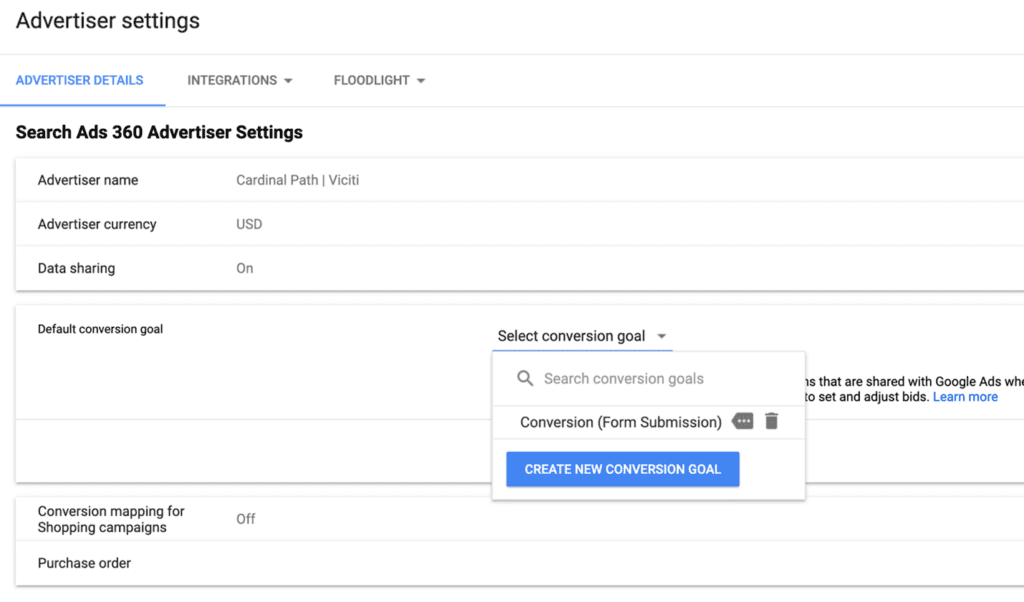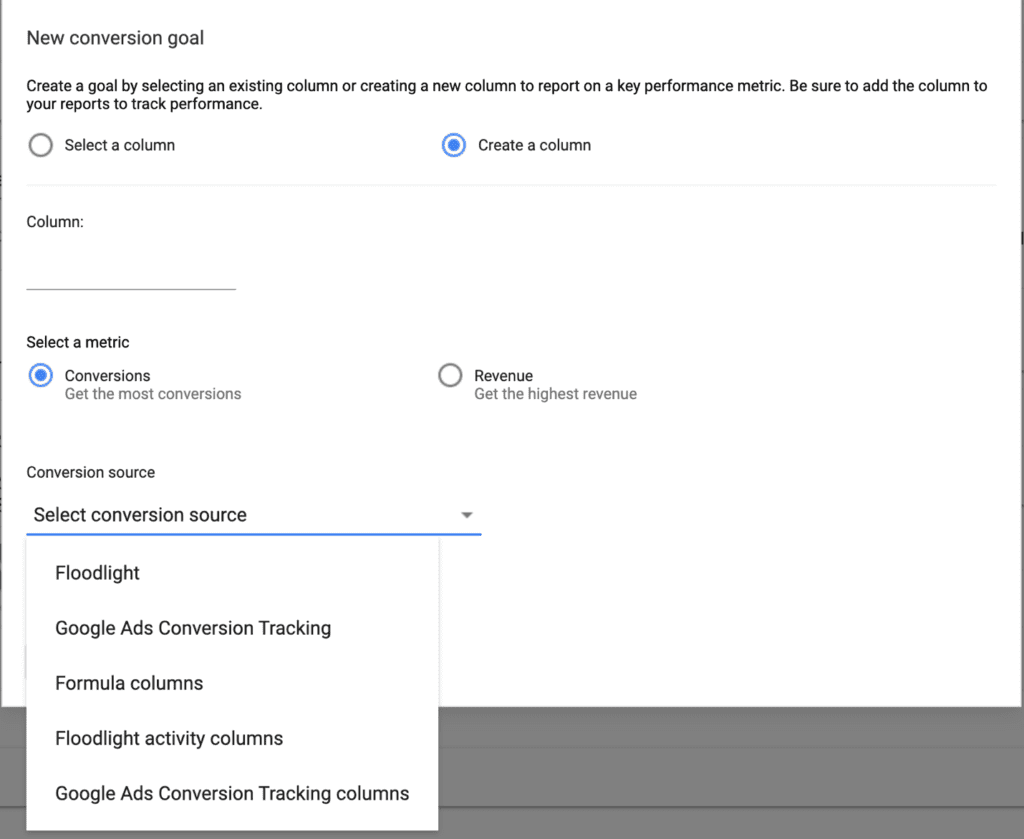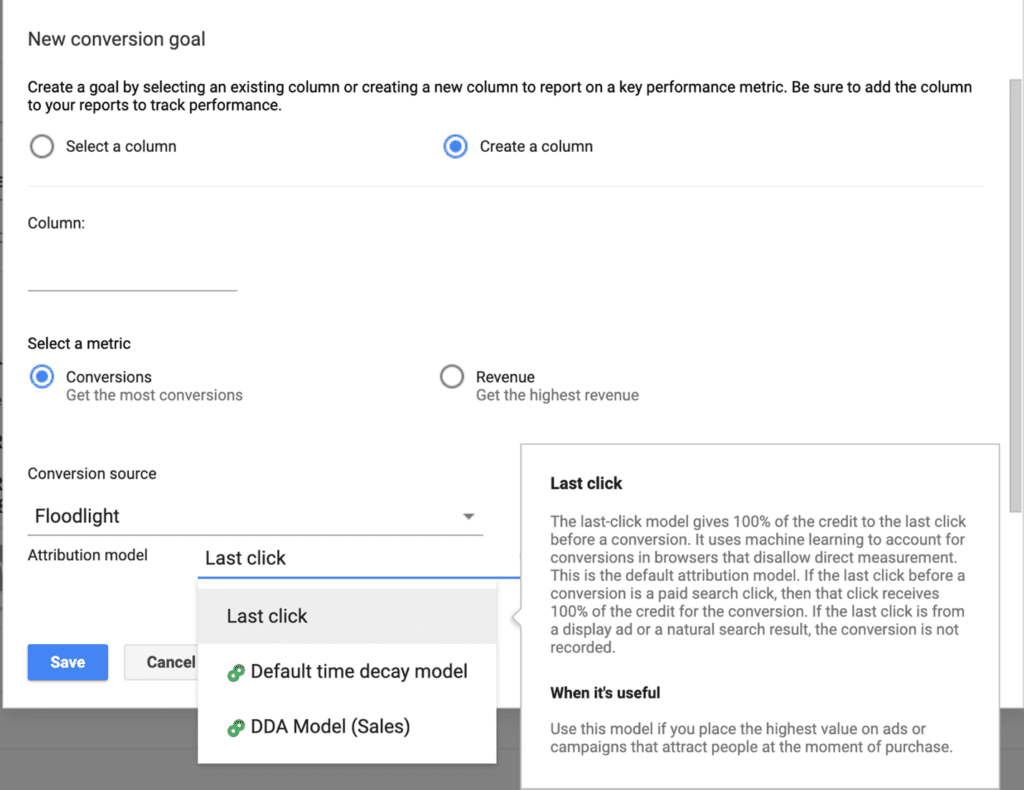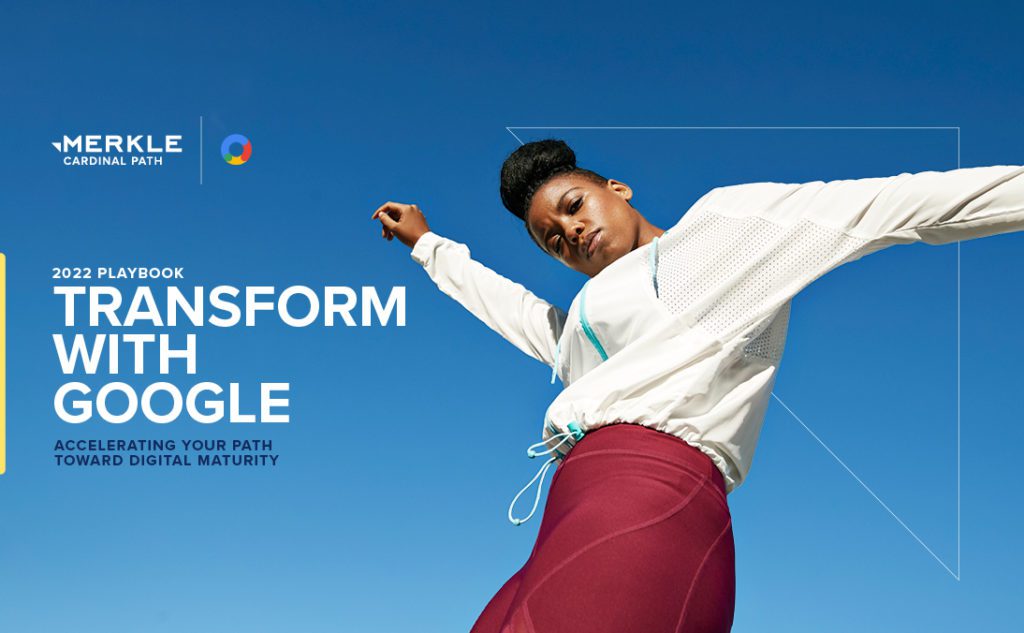Today’s search engine marketing (SEM) professionals must manage more formats and campaign components than ever before. Google’s search campaign offerings have changed significantly from 15 years ago, when standardized text ads were the only option marketers had. Now there are both text and product-focused ads across formats that include Local Inventory Ads, App campaigns, shopping campaigns, Performance Max campaigns, and more. When you add Microsoft into the mix, the number of different campaign types can feel overwhelming.
With so much to manage, it’s critical for search teams to streamline their work. This can help ensure you’re not wasting valuable time and resources on mundane tasks, especially if your marketing team is lean. Thankfully, there are platforms like Google’s Search Ads 360 (SA360) to help unify your marketing initiatives and streamline your performance marketing processes. Here are the five top SA360 features that can make managing performance marketing campaigns easier and more efficient.
1) Deploying Ad Builder to create and modify ad copy across multiple ad groups at scale to save time
It’s not uncommon for PPC managers to spend hours updating their ads by hand after making an edit via Google Ads editor or using a spreadsheet template. As the size of an account increases, so too does its complexity and the frequency of ad copy updates needed. One way to simplify this process is to use an ad builder within SA360. Ad builder tools offer an easy way for marketers to create custom campaigns using prebuilt templates and then customize them by adding their own content.
In the SA360 interface, ad builders do exactly what they say they’ll do – create advertisements for websites. They do this by using templates that can build ads very quickly across all search ad groups in a given advertiser account. One template can create ads in any number of ad groups, massively reducing the amount of time that would be spent uploading creatives.
Through the use of business data you can assign unique information about your business to specific advertising accounts, campaigns, or ad groups. This can improve reporting insights and, in the case of ad builders, simplify the creation of ads by automating campaign management.
We use business data tables to provide contextual relevance for our ads. For example, if an advertiser wants their product description to be shown next to keywords related to “socks” then they would enter “sock” into one column and “wool socks” into another column. By doing this, when someone searches for “wool socks”, the system knows which column to show them. You can use this business data row to create ads for specific audiences within an ad group.
A retail account with sportswear brand ad groups may be an example of how this would work. You could build a business data table for “Sportswear Brands,” with a row for each brand. After you’ve populated the company data row to the relevant ad groups using an ad builder template, you may use it to generate an ad. When making large-scale changes that affect the entire account, such as changing ad text to Black Friday or Christmas-themed messaging, this is quite useful.
2) Auction-time bidding in Search Ads 360 to improve performance across all your campaigns
In this section, we will teach you how to set up auction-time bidding (ATB) as well as what it means for advertisers. We’ve broken down our topics into three sections:
- What is auction time bidding?
- How does auction time bidding work?
- Why use auction time bidding?
With these components combined, your business can make informed decisions on whether setting up ATB is right for you based on case study results from other Search Ads 360 users who have already implemented the model successfully.
What Is Auction-Time Bidding?
ATB is a newer bidding type for Search Ads 360, designed to help you increase performance across all of your campaigns by maximizing revenue and capturing the true demand for your keywords.
The auction-time bidding model can be used with search and shopping campaigns. You have a choice between automated or manual configuration, but either way it will optimize bids according to real-time relevancy signals in order to maximize average CPC while capturing as much demand as possible within budget limits (though advertisers may opt out for another type of automated bidding process).
How Does Auction-Time Bidding Work?
With ATB, Google Ads uses machine learning algorithms based on historical data from similar searches/products/ads along with search context signals like time of day and device to predict what the current auction is worth. Google Ads will then automatically adjust your bids in order to win the auctions that will drive as much revenue as possible while staying within the confines of return goals and budget constraints.
Why Use Auction-Time Bidding?
ATB’s purpose is simple: increase advertiser performance by using machine learning algorithms to capture true demand and provide a bid that maximizes revenue. The results are impressive – businesses who have made the switch to auction-time bidding have seen a decrease in CPCs while maintaining or increasing their impression share and growing revenue.
You can check out this Google Marketing Platform post on what ATB has done for other advertisers.
3) Power up your media campaigns by using cross-channel remarketing within Search Ads 360
Cross-channel remarketing in SA360 enables you to target past customers across different channels, including paid search and social media, and can help streamline your reporting. This can help improve your campaign performance by increasing the chances that potential customers will see your ads multiple times across different platforms like Google Ads, Facebook, Instagram, or Twitter, increasing the likelihood that they’ll convert.
The ads can be targeted in a way that allows you to streamline your messaging according to where users are in the customer journey, regardless of what channel they’re using. This means you can deliver a consistent, meaningful message at scale to any user whether they’re in the awareness stage or further down the funnel. This will ensure you achieve greater digital marketing maturity and provide a great customer experience along the way that accelerated the user’s journey to purchasing.
Once you’re in SA360 cross-channel remarketing can be enabled relatively quickly with ease by following these steps.
- To set up cross-channel remarketing in SA360, first create a Remarketing List in Search Ads 360. This list will contain the IDs of all the customers you want to target across different channels. In Search Ads 360, make sure to label search campaigns, ad groups, ads, or keywords that are relevant to your remarketing efforts on other channels.
- In Search Ads 360, create a remarketing list so you can associate it with the labeled items you created in step 1.
- Make sure to create a social engine first under the engine accounts. Then, set up a remarketing list for your web site visitors and update your site with the remarketing tag the social engine generates. For this list, set up a URL CONTAINS rule that adds customers to the list when they click ads associated with a specific Search Ads 360 remarketing list.
Give it a few days for the new remarketing lists to start populating and you can start your cross-channel remarketing efforts to boost your revenue.
4) Enabling the Default Conversion Goal (DCG) to share conversion data across your search campaigns
The best way to track conversions in Google Ads is using campaign-level custom conversion goals, which track conversions for each campaign. If you’re looking for more streamlined reporting – say, between all of your search campaigns within Search Ads 360 – there’s another option available: enabling the “Default Conversion Goal” within SA360.
Setting up default conversions works similarly to setting up other custom conversion goals in SA360. The only difference is in how you actually use this conversion goal versus any other types of custom goals. Here’s how it works:
- Log into Search Ads 360 platform and choose your Advertiser.
- Create a new default conversion goal by going to Advertiser Settings on the left hand column and clicking “Advertiser Details” and selecting default conversion goal.
- Click on “Create a New Conversion Goal” and in the pop-up window select the appropriate option for your brand. This could be maximum conversions, specific ROAS goals, ERS (estimated revenue share) targets or Revenue (to get the highest revenue).

- Name your newly created column which will be the name for your new DCG. Don’t forget to select a metric and revenue metric as well as a conversion source. We recommend setting up Floodlight conversion goals through Google Tag Manager.

- Select your preferred conversion tracking method, whether it’s through Search Ads 360 or Google Ads conversion tracking, then configure any customizations if necessary. Click save when finished.
- Using a Floodlight as your conversion in our example is perfect for e-commerce brands. We’ve created a DDA attribution model within our advertiser, which you can do in Campaign Manager or Google Analytics 360. Remember to pick a Floodlight tag suitable for your brand’s main KPIs (your north star) that you want all campaigns to be optimizing for. This could be revenue for e-commerce brands or downloads/leads for others.

- Remember to click save on your new DCG and you’re all done! Now all your search campaigns will share performance or conversion data between all of your search campaigns within Search Ads 360. This will help you maximize performance across all your search or shopping campaigns across multiple platforms within Search Ads 360.
5) Connecting DV360, CM360, and GA360 to SA360 to improve your marketing processes
What are the benefits of integrating SA360 with DV360 and CM360?
By hooking up Google Analytics 360 (aka GA360) with both Campaign Manager 360 (CM360) and Display & Video 360 (DV360), Google offers some clever synergies between these platforms that can benefit SA360 users.
For example, you can tag specific elements of your website in order to track behavior across multiple platforms – including Search, Display, YouTube, and more. This provides valuable insights into what brings visitors to your websites and helps you serve them relevant ad content on the right website, at the right time, and on the right device.
SA360 also offers client ID syncing between different Google products/services. This allows the automation of remarketing efforts by tagging users on one platform (via SA360), then serving ads or launching marketing campaigns on the other (via CM). Similarly, re-marketing lists are built via integration of these two programs which further aid in eradicating wasted ad spend.
DV360 is a powerful solution for running media campaigns by managing deals that can open doors to additional data sets and new campaigns via the CM360 platform.
Integrating SA360 with CM360 will allow for deeper insights into ad traffic and effectiveness, enabling an efficient allocation of resources across all of your publishers/partners and maximizing revenue on every impression. Each Search Ads 360 advertiser and the associated CM360 advertisers can share the same set of Floodlight settings, activities, and tags used to report conversions. This makes it possible to track conversions from both display and search advertising using a single set of tags.
What are the benefits of connecting CM360 to SA360?
By integrating SA360 with CM360, advertisers are able to see metrics for their Display campaigns alongside search and shopping campaign data. Advertisers can immediately identify gaps between the markets they’re reaching and the customers they need to reach in order to maximize revenue.
For example, if your display strategy is limited due to budget, you may opt for using remarketing lists for search ads (RLSA) instead of expanding your reach into other markets that offer less competition but similar or even higher potential revenue compared to what you’re getting from your existing markets.
With access to more granular data, you’ll be able to enhance your campaigns with enhanced targeting (via the addition of custom dimensions and metrics), leading to better campaign performance and more effective strategies.
- Better Outcomes – Higher CTRs, lower costs per click, increased conversion rates and ROI
- Actionable Insights – Detailed campaign reporting allows you to quickly see what’s working for your business
- Actionable Intelligence – Gain insights into specific audiences across channels such as Display Network or YouTube
- Optimize Your Media Spend – Real-time optimization to maximize ROI while minimizing ad spend.
Therefore, you can gain access to more granular data which helps with better targeting and thus leads to greater conversion rates. A key example is the integration of SA360 with Display & Video 360 (DV360) where advertisers can connect their TV campaign data with digital campaign data. This allows for better cross-channel communications and advanced reporting, helping an advertiser make important changes in real time and achieve greater market reach, leading to increased ROI.
How does CM360 connect with SA360?
You’ll be able to download mobile search data into Google Analytics using SA360 connectors for DV360 and CM360 to provide detailed insights on attribution across multiple channels. This will allow you to measure the true value of search advertising in driving campaign performance. You can also use automated reporting templates in GA360 to generate custom reports and email them to users daily, weekly, or monthly.
Google’s SA360 is an enterprise solution which, through the features outlined above and countless others, enables multi-channel marketing professionals to centrally manage paid search and other online advertising campaigns. Whether your campaigns span search networks like Microsoft Ads (Bing Ads), Yahoo Gemini, Baidu, or Yandex, SA360’s sophisticated tools can help you dynamically manage keywords, ad placements, bids, and budgets in real time, creating consistency, efficiency, and strong performance across a complex landscape.














